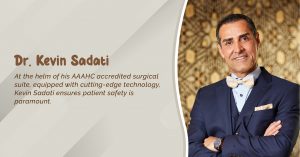Preserving Time: A Journey into the World of Preservation Facelifts


As the years pass, the effects of aging become increasingly apparent on our faces. While some embrace the changes as a natural part of life, others seek ways to preserve their youthful appearance. In recent years, preservation facelifts have become a groundbreaking approach to facial rejuvenation. In this article, we embark on a journey into the world of preservation facelifts, exploring their techniques, benefits, and the transformative impact they offer.
Understanding the Concept of Preservation Facelifts
Preservation facelifts differ from traditional ones, often involving extensive tissue manipulation and tightening. Instead of focusing solely on lifting sagging skin, preservation facelifts aim to restore youthful contours while preserving the natural architecture of the face.
The fundamental principle behind the preservation of facelifts is to address the underlying causes of facial aging, including volume loss, tissue descent, and structural changes, without altering the fundamental characteristics of the face. By employing a more conservative approach, surgeons can achieve natural-looking results that enhance rather than limit the patient’s appearance.
Preservation facelift techniques prioritize tissue preservation and repositioning over aggressive tightening, resulting in subtle, refined, and long-lasting outcomes. This approach is particularly well-suited for patients who wish to maintain their facial features while rejuvenating their overall appearance.
The Evolution of Preservation Facelift Techniques
Over the years, preservation facelift techniques have evolved significantly, thanks to advancements in surgical technology and a deeper understanding of facial anatomy. Modern preservation facelifts are characterized by a less invasive approach, smaller incisions, and a greater emphasis on tissue preservation.
One of the critical techniques used in the preservation of facelifts is the incorporation of fat grafting, which involves harvesting fat from one area of the body and injecting it strategically into the face to restore lost volume. Fat grafting adds youthful fullness to the face and stimulates collagen production, improving skin texture and elasticity over time.
Another innovation in preservation facelifts is using minimally invasive procedures such as thread lifts and laser treatments to complement surgical techniques. These non-surgical modalities can help enhance and maintain the results of a preservation facelift, prolonging the longevity of the outcome.
The Benefits of Preservation Facelifts
Preservation facelifts offer various benefits for patients seeking facial rejuvenation with a more subtle and natural-looking outcome. Unlike traditional facelifts, which can result in a “pulled” or overly tight appearance, preservation facelifts produce results harmonious with the patient’s facial anatomy and age gracefully over time.
By preserving the integrity of the facial tissues and avoiding aggressive manipulation, preservation facelifts minimize the risk of complications such as nerve damage, hematoma, and prolonged swelling. This translates to a smoother recovery process and reduced patient downtime, allowing them to resume their normal activities sooner.
Furthermore, preservation facelifts are highly customizable to each patient’s unique anatomy and aesthetic goals. Surgeons can tailor the procedure to address specific areas of concern, whether lifting sagging jowls, smoothing wrinkles, or restoring volume to the cheeks and temples.
The Artistry of Preservation Facelifts
Beyond the technical aspects, preservation facelifts require a keen eye for detail and a nuanced understanding of facial aesthetics. Surgeons must approach each procedure with a delicate touch, balancing the principles of preservation and enhancement to achieve optimal results.
The artistry of preservation facelifts lies in the surgeon’s ability to sculpt and refine the contours of the face, restoring youthful proportions while maintaining the patient’s unique features. This involves precise manipulation of tissues and meticulous attention to detail, from the placement of incisions to the distribution of fat grafts.
Preservation facelifts represent a paradigm shift in facial rejuvenation, offering patients a more conservative and natural-looking alternative to traditional facelift techniques. By prioritizing tissue preservation and subtle enhancement, preservation facelifts empower individuals to age gracefully while preserving their inherent beauty and vitality.
As advancements in surgical technology evolve, preservation facelift techniques stand at the forefront of facial rejuvenation, providing patients with renewed confidence and a refreshed sense of self. Through the artistry of preservation, surgeons preserve not only the physical attributes of youth but also the essence of individuality and self-expression, embodying the timeless pursuit of beauty and self-preservation.
